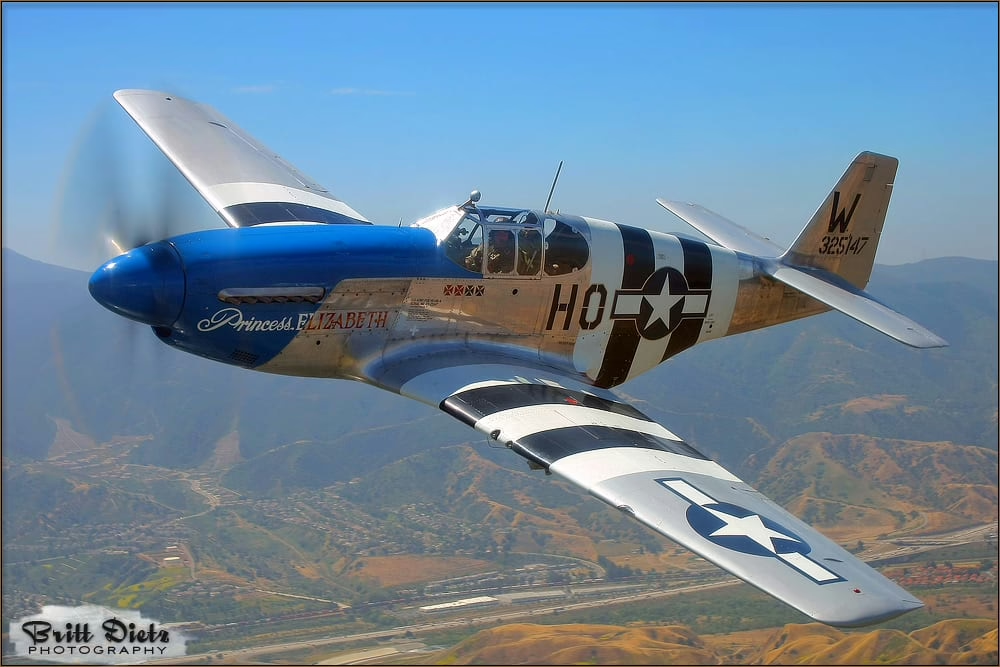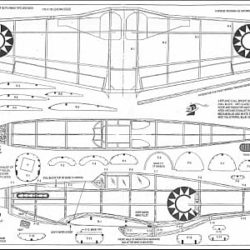North American P-51B/C Mustang III historical facts
The first production North American P-51B/C Mustang III took to the air on its maiden flight on 5 May, 1943. North American’s plant in California would follow it with almost 2,000 more examples. But even this was not enough. In Dallas, North American opened a second production line producing identical copies designated P-51Cs. Total production in Texas would provide another 1,750 Mustangs for the war effort.
The Packard Merlin V-1650-3 was used on the first production machines, but this was changed to the V-1650-7 beginning with the P-51B-10-NA and the P-51C-5-5-NT. Equipped with a 2-speed, 2-stage supercharger designed by Wright, it was an outstanding powerplant that gave the Mustang performance that matched or bettered the top propeller-driven fighters of the Luftwaffe at high altitudes.
In November 1943, when the 354th Fighter Group became the first to receive the new Mustang, the concept of using unescorted bombers on daylight raids had proven unwise to say the least. Although the P-38 had been available from the beginning as a long-range escort fighter with high-altitude capability, many had been sent outside the European Theater of Operations. Some had gone to Africa, while others continued to prove their capabilities as long range fighter over the wide expanses of the Pacific Ocean. When the decision was made to provide escort for the heavy bombers in Europe, the USAAF not only needed good escort fighters, it needed lots of them. That is what the production lines in California and Texas could provide.
Most of the visible changes made to the Mustang‘s airframe to build the North American P-51B/C Mustang III were directly related to the engine change. The carburetor scoop was moved from on top of the nose to a position below it. The forward end of this larger scoop was just aft of the spinner. The cooling-air scoop under the fuselage was enlarged. As viewed from the side, the lip for the scoop was cut at an angle rather than being even as on the Allison-powered versions. The entire inlet was positioned further away from the bottom of the fuselage and wing. Almost every other feature remained the same. The single landing/taxi light was retained in leading edge of the left wing. As it had been with the P-51A, armament was four .50-caliber machine guns, all of which were located in the wings. Seventy-one camera equipped P-51Bs were designated F-6C-NAs while twenty P-51Cs fitted with the same camera installations were officially labeled F-6C-Nts.
Eventually, 1,988 North American P-51B Mustang IIIs were built at Inglewood under the NAA designations NA-102 and NA-104, and 1,750 North American P-51C Mustang IIIs came off the production lines at Dallas under the NAA designations NA-103 and NA-111. The NA-111 block numbered 400 aircraft, and was from 1944 procurement. The first production P-5IB-1-NA to fly did so at Mines Field on 5 May 1943. NAA having received the first production V-1650-3 engines for these aircraft in April 1943, and the initial P-51 took to the air in Dallas three months later, on 5 August 1943. The first deliveries to the USAAF were made in June 1943, and by then the mire of service testing had begun to be straightened out. Later in the year, elements of the 354th FG became the first front-line USAAF group to equip fully with the type. The scene was set for the Merlin Mustang to begin its combat career.









